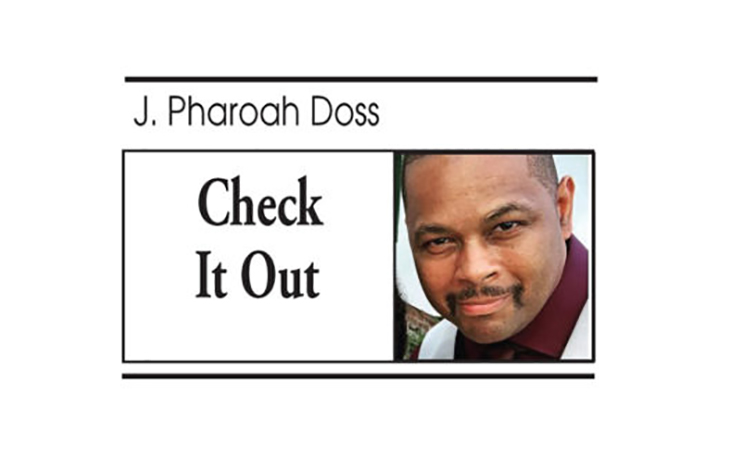Mychael Denzel Smith, a writer and activist, participated in a 2015 panel discussion about the riot in Ferguson, Missouri, that occurred following the 2014 Michael Brown police shooting. Someone asked the panel how to engage in peaceful societal change. Smith replied that revolutions in history have happened through violence. “The destruction of property is not violence,” he added. “It’s what revolution looks like.”
A journalist reported that 25 businesses burned down after the Ferguson riot, but the most encouraging thing was that no one had died. The absence of deaths during a riot is an anomaly. That’s why Smith was able to glorify property destruction as a revolutionary act.
He confused the deviation from the norm with the norm. How could he not?
Smith was born in 1986. He was six years old when the 1992 Los Angeles riots broke out following the not-guilty verdict for White police officers seen on video beating Black motorist Rodney King. The Los Angeles Times reported that more than 60 people died as a result of looting and fires that ravaged the city.
As a young man, Smith learned about the 1992 riot from hip hop artists and Afrocentric historians who referred to it as the “LA uprising,” but Smith’s informal teachers overlooked the fact that 60 people would not have died if the violence had not taken place. Smith didn’t learn that lesson. He also failed to grasp the giant contrast between the Los Angeles riot and the Ferguson riot.

The LA riot erupted following the criminal trial of the LA police officers.
This means that the legal system played itself out before any violence occurred. The LA riot was a response to an unfair verdict, but the Ferguson riot started before the rioters knew the full story.
The media determined that the Ferguson police officer was guilty because he was White, while the victim was innocent because he was Black. The Ferguson police officer became a symbol of White oppression, while the Black victim represented the system’s abuse of minorities.
The Ferguson rioters were motivated by what the police shooting represented, not by the facts on the ground. Everything the rioters first believed to be true about the Michael Brown shooting was eventually revealed to be false, making the Ferguson riot one of the most senseless acts of the twenty-first century.
In 2020, an unarmed Black man, George Floyd, was killed by a White Minneapolis police officer; however, unlike Michael Brown in Ferguson, Floyd’s killing was recorded. The police officer held his knee on Floyd’s neck for more than eight minutes. Even after Floyd complained about being unable to breathe, the other police officers chose not to intervene.
The Minneapolis Police Department immediately fired all of the police officers and charged them with major felonies. (Two police officers were White. One was of mixed race—African American and White—while the other was of South Asian descent.) Poor policing, not racial animosity, was the cause of Floyd’s death, prompting the system to swiftly punish the officers.
However, as in Ferguson, the police officer with his knee on Floyd’s neck represented White oppression, and the Black victim represented Black communities suffering under systemic racism.
This situation resulted in 574 riots across the nation, but the media played down the violence. Nikole Hanna-Jones, a well-known Black journalist, remarked that violence occurs when a state agent kneels on a man’s neck. She said that destroying replaceable property isn’t violence, and using the same term for both is immoral.
The media focused on activists who used Floyd’s death to persuade government officials to defund the police and undertake other social justice initiatives. The media also reported that corporations had donated millions of dollars to social justice organizations in response to Floyd’s murder.
What received little notice was the number of individuals killed during the violence.
When the violence ended, 19 people had died as a result of the riots. Fox News pointed out, “Many of the people killed were Black, compounding the tragedy in Black communities.” (For comparison, the total number of unarmed Black people shot by police officers in 2020 was 18, which “defund the police” activists argued was excessive and justified police reform.)
The following year, the Minneapolis police officers were convicted, unlike in Ferguson and Los Angeles.
Last month was the fifth anniversary of George Floyd’s death, and the headlines were bleak. The New York Post wrote, “Minneapolis is still broken five years after George Floyd’s death,” USA Today wrote, “George Floyd’s legacy is under siege as racial justice efforts lose ground,” and The 19th News wrote, “Five years after George Floyd’s death, activists say the promise of change remains unfulfilled.”
Why is the conviction of a White police officer for the murder of an unarmed Black man generating so many negative headlines?
The 19th News provided the answer when it explained that activists “were once hopeful that outrage over Floyd’s death would improve racial equity for Black Americans. Now they worry the federal government is taking the country in the opposite direction.”
Apparently, they expected their outrage to be a catalyst for change.
That means the activists, peaceful demonstrators, and rioters never sought justice for George Floyd. They used Floyd’s death to further their own naïve political objectives. Five years later, they have yet to learn the most important lesson from the riots.
The lesson is that if they had allowed the legal system to play itself out like it did in Los Angeles in 1992, the police officers would still have been convicted and none of the 19 people would have died, making the 2020 George Floyd riots more senseless than the riot in Ferguson.